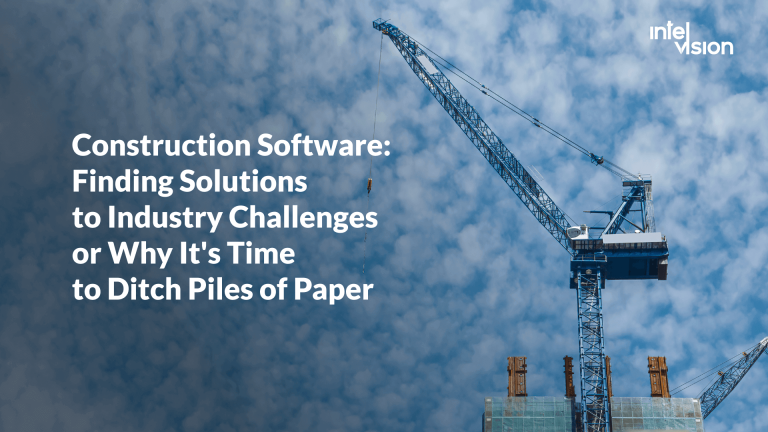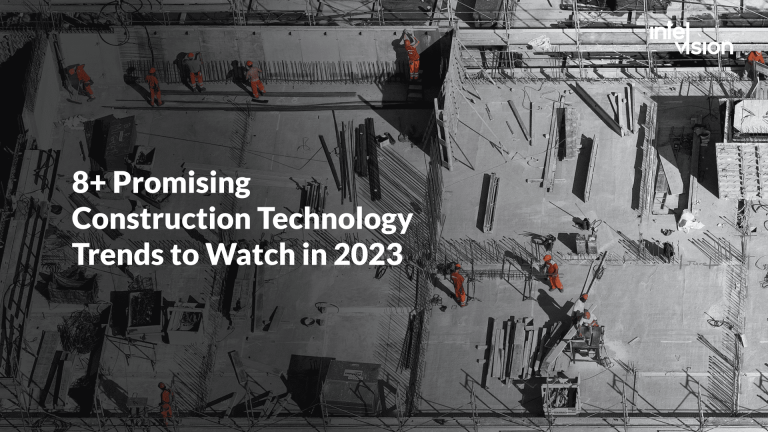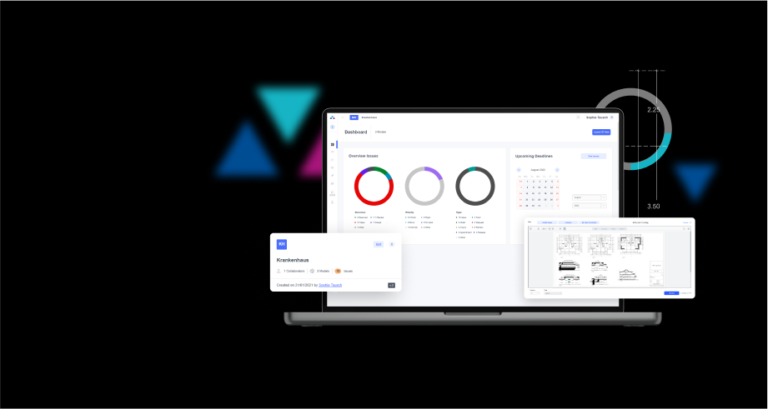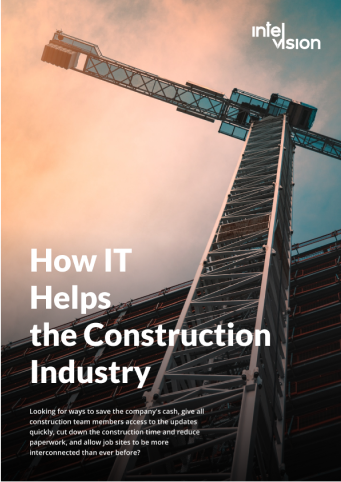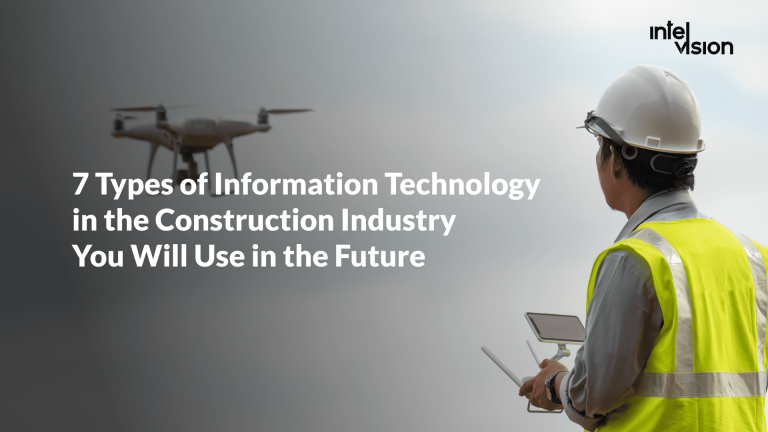
7 Types of Information Technology in Construction You Will Use in the Future
Worth $10.5 trillion, the construction industry is ripe for technological disruption. Especially considering the fact that the amount of data in the sector increases daily, calling for technologies to manage, analyze, and safeguard it.
Here is the news: information technology can help construction companies maximize efficiency and reliance on data. Let’s take a deeper look at the importance of information technology in the construction industry.
Benefits of Adopting New Technologies in the Construction Industry
Remaining resistant to changes in innovative solutions and information technology in construction could mean that your existing infrastructure becomes obsolete or that your business loses its ability to remain competitive.
On the contrary, when you opt to adopt new construction information technology, you help your construction workers to make the best possible decisions both in the office and in the field. Improving your team’s decision-making ability helps to meet or beat deadlines by budgeting materials, labor, and time. As a result, information technology in construction can lead to increased profits and profit margins.
What Information Technologies are Used in the Construction Industry
There is real information technology in construction and benefits to modernizing your current processes. These solutions are changing the sector and how future projects will be completed in construction.
Building Information Modeling (BIM)
BIM integrates structured data to produce a digital representation of an asset across its lifecycle. It can create a computer-aided design by combining a building design with relevant data to generate digital construction models. As a result, engineers can then use them in all construction phases to improve efficiency and results for clients.
Augmented Reality (AR)
AR uses digital technology to add digital visuals to a real-world picture. How can it be used in construction? Augmented Reality in the construction industry can be used during:
- The design phase, before construction begins.
- The construction/building phase: AR helps to check if everything is going according to plan. In turn, this makes it easy to avoid mistakes.
- After construction project completion, to ensure that all requirements and expectations have been met.
The key advantage of Augmented Reality is the combination of documentation and digital information. It enables employees, architects, engineers, and customers alike to regularly monitor the construction process on the site, performing construction measurements and gauging project efficiency.
Virtual Reality (VR)
According to the Fortune Business Insights report, the global VR market is expected to grow to $84.09 billion by 2028. Virtual Reality in the construction sector is desired or required by many organizations for several reasons. It is not only making a positive impact on safety but also on productivity.
VR application of information technology in the construction industry helps companies throughout the world to create a virtual immersive and interactive representation of a construction project. More precisely, you can put your clients into a construction project as though it is finished and ready. Stakeholders can view every nook and cranny to find misconceptions so they will not pay twice for mistakes later.
Moreover, using virtual reality in construction training helps to provide safe and risk-free working conditions. Thanks to technology, construction workers are ready for emergencies like breaks, fires, or working in bad weather conditions and know how to act effectively.
Robotics
Nowadays, robotics can be found both in manufacturing and on the job site. Robots will help partially replace the workforce, as well as enhance the competencies of people on the job site.
There are several different types of robots that are available in the construction market:
- Brick-laying robots. They can help you benefit from faster masonry work, less material wastage, and overall cost-efficacy.
- 3D printing robots. They are controlled by computer programming and AI. The advanced construction robotics technology reads the 3D CAD models and 3D prints the structure accordingly by placing layers of the materials, and with high accuracy.
- Exoskeletons. An exoskeleton is a metallic framework that can be worn by a person. It assists a worker in lifting heavy loads and maintaining the body balance of the construction worker. With its help, you can minimize injuries due to the lifting of heavy objects. Hence, it will increase the efficiency and productivity of labor.
Artificial Intelligence (AI)
For years, AI has provided benefits to various projects. Construction firms use Artificial Intelligence to analyze project data such as construction sites monitoring and predictive analytics in real-time, to make informed decisions that have implications for the project’s quality, safety, profitability, and schedule.
Just as OpenAI’s ChatGPT can deliver AI’s vast knowledge within seconds, Artificial Intelligence can quickly and efficiently solve problems that have plagued the construction sector for years. AI is opening up to everyone from designers to job site crews. Larger construction business has even started to build out their own Artificial Intelligence software to help with internal decision-making processes and operations. Approximately 92% of companies in the construction industry said they were using AI in 2022, according to Peak’s Decision Intelligence Maturity Index.
Data Collection Mobile Apps
Virtually every facet of a construction project including pre-construction planning and scheduling, work orders, progress, time reporting, maintenance, safety, accounting, and more can be managed with mobile devices.
Integrating this type of technology into your current processes provide major benefits such as:
- Significant time savings and reduced sensitive data entry errors. Data collection application users have reported more than 20 field and administrative hours saved each week, along with a 50% reduction in data entry errors.
- Enhanced workflows. You can automate data collection workflows. Additionally, some data collection apps offer mobile forms and web forms apps so your construction workers can submit forms on any digital device.
- Instant reporting. A data collection application is going to help you streamline reporting. You can also easily customize reports based on your business needs.
You might also be interested in: How to Make Construction Data Management a Competitive Advantage in the Industry
Drones
Drones have become one of the most convincing construction trends. The industry experiences a 239% growth in drone use annually.
The main benefits of drones for construction companies are increased efficiency, reduced expenses, improved safety standards, and improved data accuracy. We’ve highlighted a few ways drones are used in the construction industry nowadays.
Topographic Mapping and Land Surveys
Drones can exponentially cut down on time spent visualizing a site’s topography. That’s possible because of their ability to map vast quantities of land. Moreover, the high-resolution images created by drones allow the construction crew to pinpoint challenges during pre-construction.
Equipment Tracking
With a drone, project managers can quickly assess whether the equipment is where it needs to be. They can also identify issues remotely.
Remote Monitoring and Progress Reports
Drones also can produce high-quality aerial views and give clients a grasp of the project’s progression.
What's Next?
Investing in the latest construction computer technologies is a smart business move. However, choosing to adopt new digital solutions or change your existing infrastructure can be a time-consuming process with far too much room for error. Because of this, it’s better to collaborate with a software development company that has experience with managing the role of information technology in the construction industry.
Intelvision is a construction software development company that specializes in helping companies adopt, maintain, and manage their software. If you are interested in learning more about how computer technologies can help your business or would like help choosing a new cutting-edge software solution or component, contact us. From our experience, onboarding data collection technology in construction is a good place to start your digital transformation. It is a fairly small upfront cost with huge ROI potential.









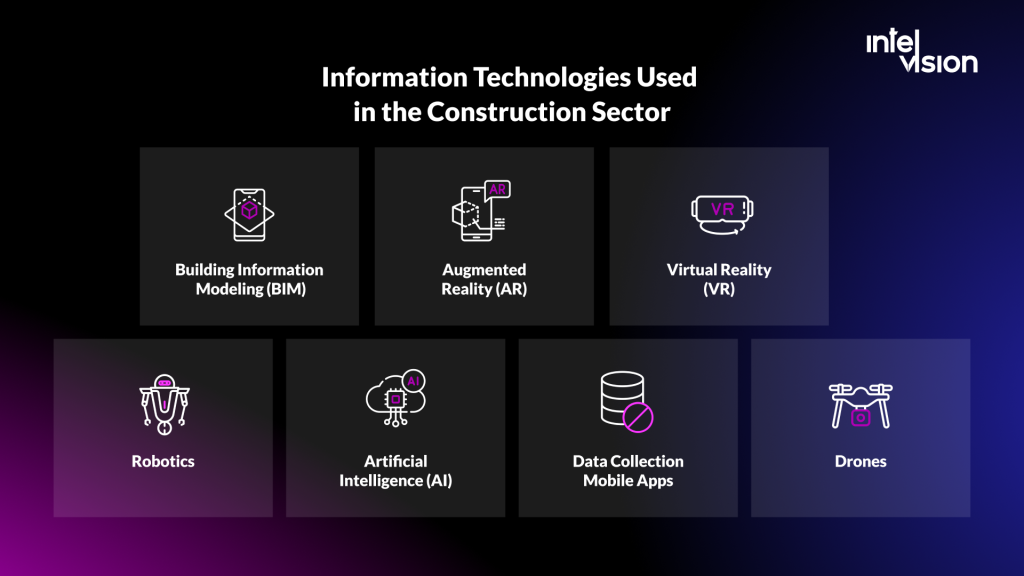
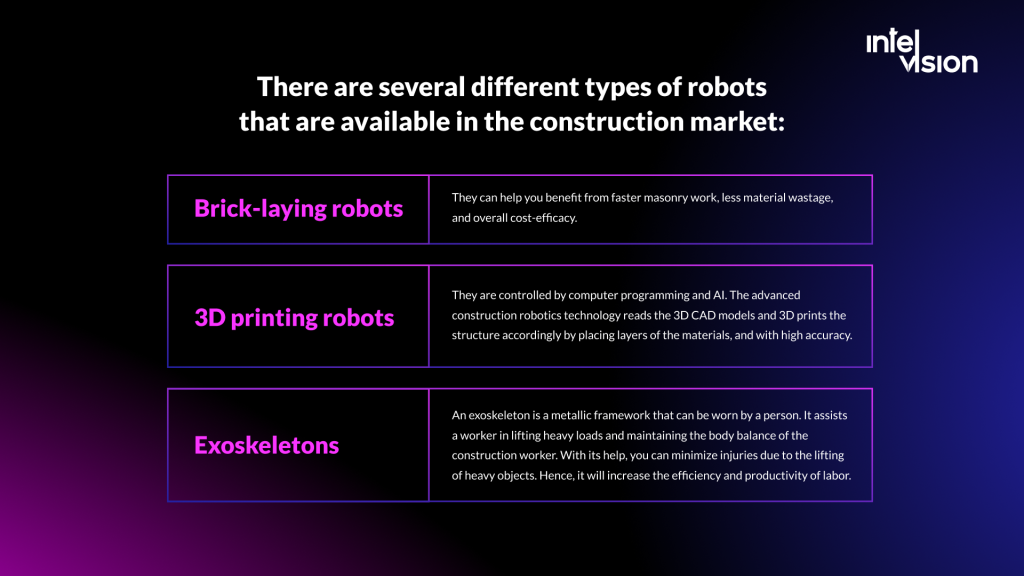
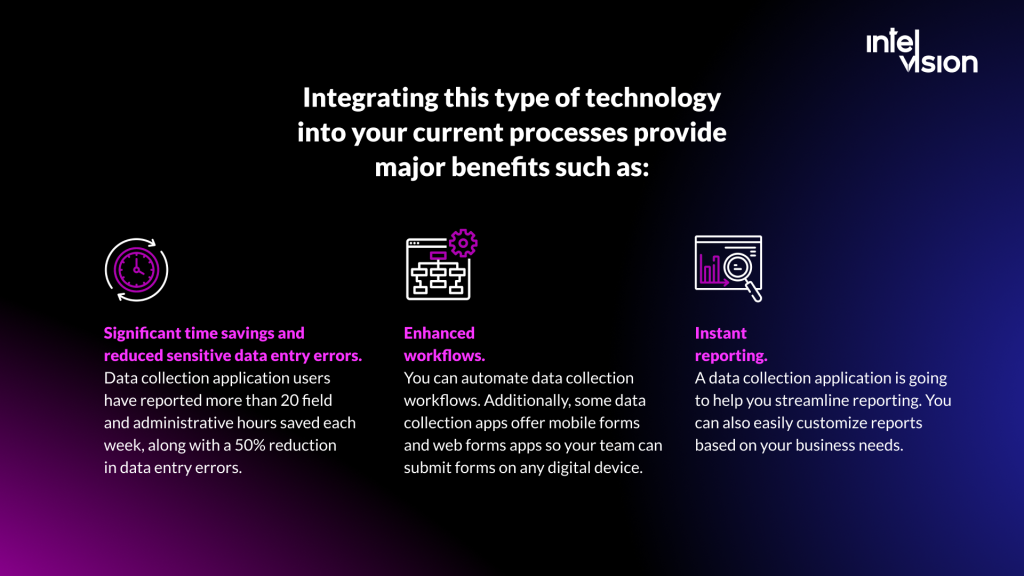


![$portfolio_img_mobile['title'] $portfolio_img_mobile['alt']](https://intelvision.pro/wp-content/uploads/2021/09/Fortuna-project-cover-mobile-262x350.png)

